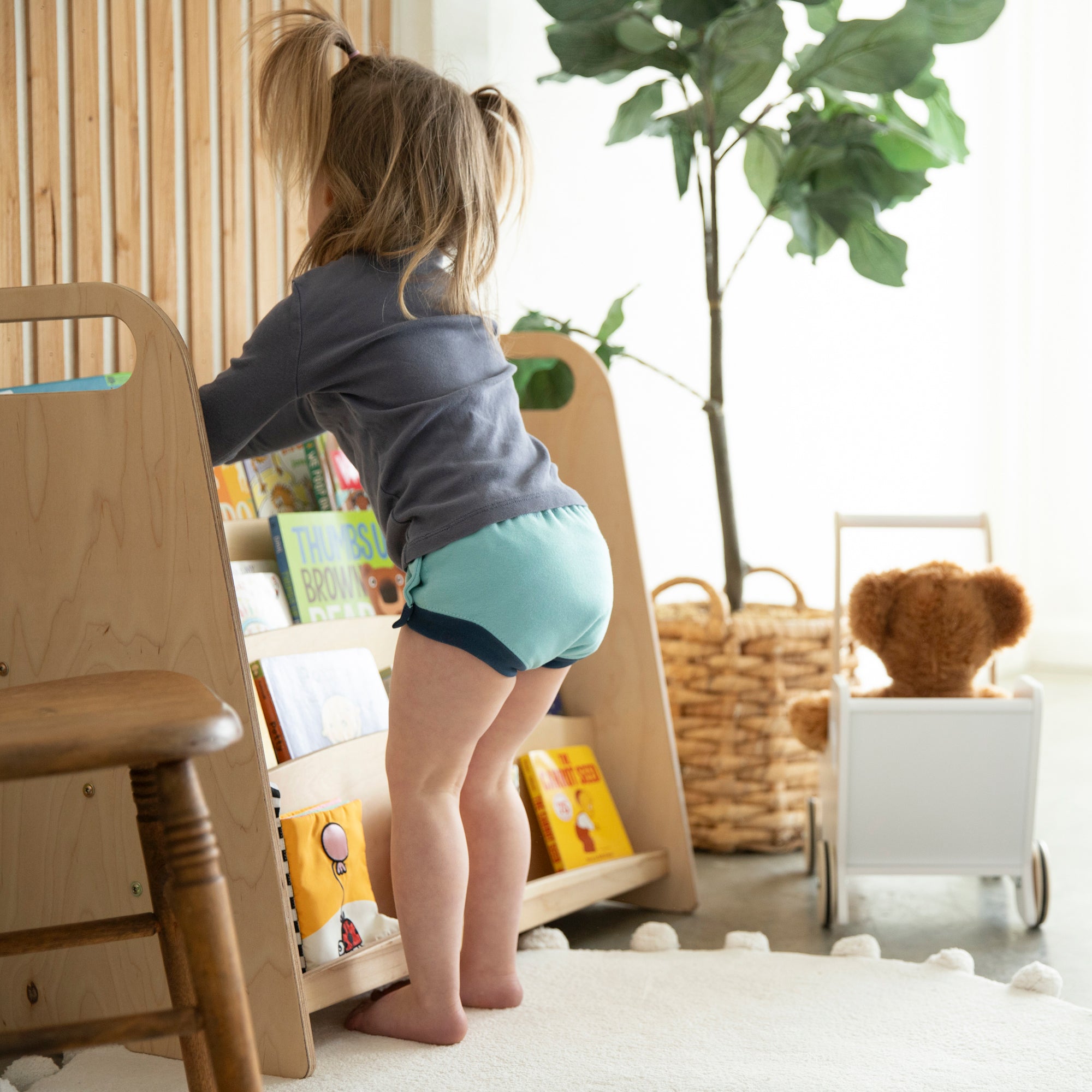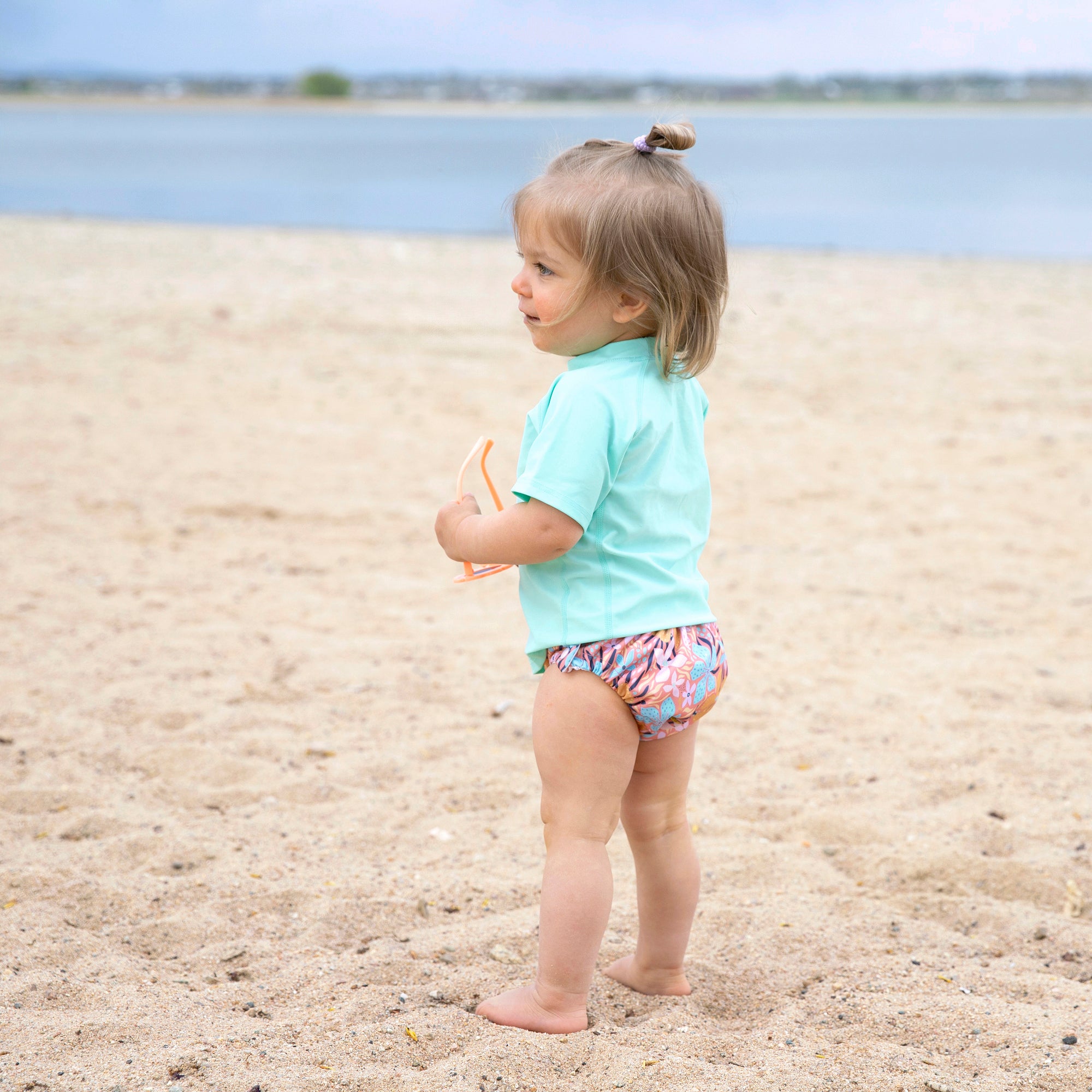On the fence about using cloth diapers? Trying to convince a spouse? Are you wondering what the
 advantages/disadvantages are? Take a look at our pros and cons list to help you with your decision. The Pros: $ Savings Your baby will go through an astonishing 6000 or more diaper changes from birth to potty training. By choosing cloth diapers and wipes, a family will actually save up to $1000 or more over disposables. You can add to the savings if you use your diapering products for more than one child. Sustainability
advantages/disadvantages are? Take a look at our pros and cons list to help you with your decision. The Pros: $ Savings Your baby will go through an astonishing 6000 or more diaper changes from birth to potty training. By choosing cloth diapers and wipes, a family will actually save up to $1000 or more over disposables. You can add to the savings if you use your diapering products for more than one child. Sustainability

- Using cloth diapers will greatly reduce your carbon footprint. Even when factoring water/power/detergent usage, materials, and manufacturing processes, cloth diapers come out ahead of disposables in conservation. Sixty times more solid waste and twenty times more raw materials, like crude oil and wood pulp, are used in the manufacturing of disposable diapers. In fact, 25 million trees are consumed and manufactured into baby diapers each year! The manufacture and use of disposable diapers amounts to 2.3 times more water wasted than cloth.
- Cloth diapers also save space in the landfills. Compare a pile of 6000 disposables to a pile of 60 cloth diapers used to diaper one child. As the third largest contributor to our landfills, all the toss-away diapers of today will still remain in tact 500 years from now.
- If kept in good condition, your cloth diapers can be used for more than one child.
- Prefolds are the workhorse of cloth diapers, and can be multi-functioned and repurposed!
- Made in the USA – All of Thirsties diapering products are made in the USA. We also keep the operations close to home, cutting down on transportation and keeping money circulating in our own communities!
- Do your research. Read reviews and use trial programs to find out what system will work for you. Mommy blogs, online forums, and FB are a great source for word of mouth from other cloth diapering families.
- Try before you buy. There are many retailers who offer cloth diaper trial programs so you don’t purchase a whole stash before investing.
- There may be a cloth diaper bank in your area, or another organization such as a pregnancy center or county health department that may be able to help you with a donation.
- You may find some great deals on Thirsties products in our Outlet Store.
- You can save BIG by purchasing used diapers. There are many sites available, such as www.diaperswappers.com.




Thanks for the comments, ladies!
Yes, a diaper service is handy and can be very useful for those who do not have time to wash, or are a bit “grossed out” about washing diapers.
I did try to make the article unbiased with no sugar coating. :) Some articles claim that you will save $2000 or more, but when you take the washing, detergent, and energy into account, it is actually more like $1000+. Still a hefty savings!!
~Sonya
If you’re looking for a cloth-diaper-friendly daycare, check the directory here: http://daycare.realdiaperindustry.org. If you’re already using cloth diapers in daycare, make sure your provider is listed so that other families can find and use them. You can add providers to the directly right from the home page.
This is a great, and unbiased, list of what the benefits and down falls of cloth diapering. I would add that cloth diapering is also available via services, and there are a number of options with cloth diapering for every situation of diapering. Also, they are sometimes a little less convenient when traveling. But the biodegradable inserts are very useful.